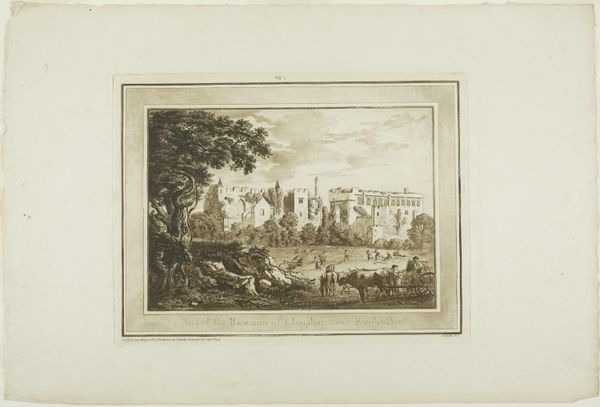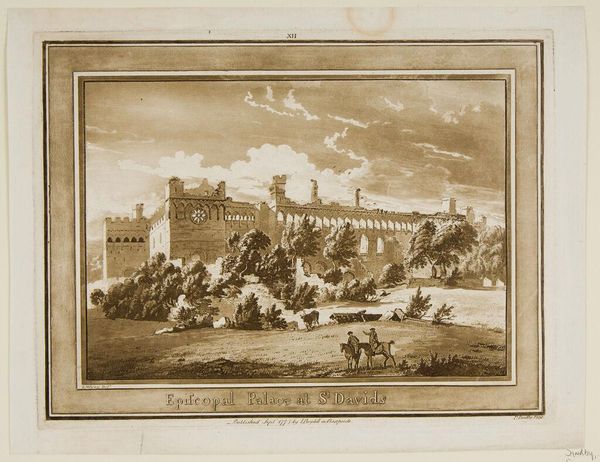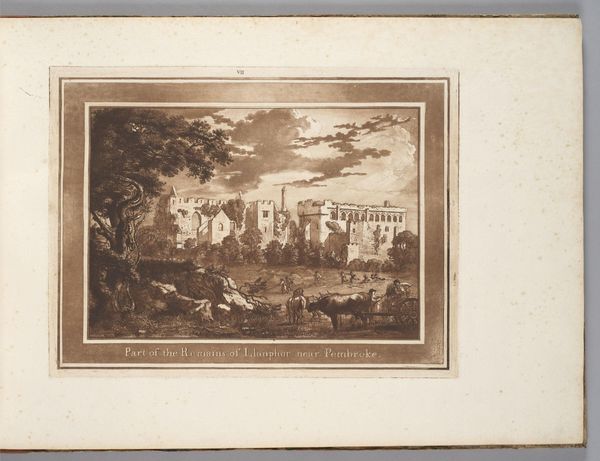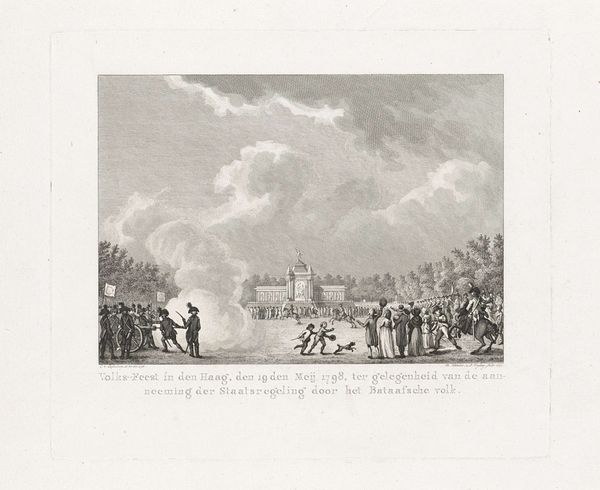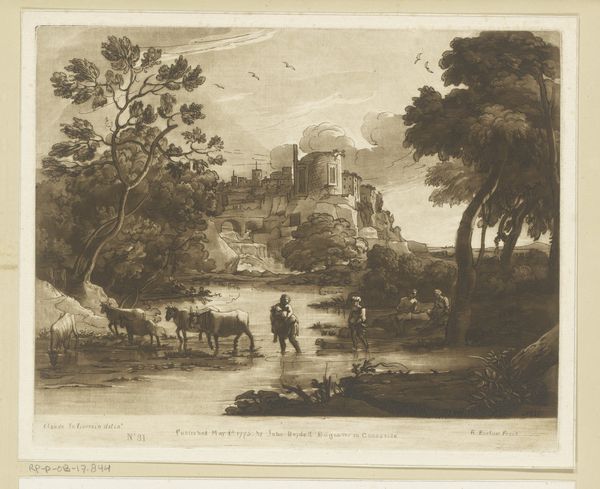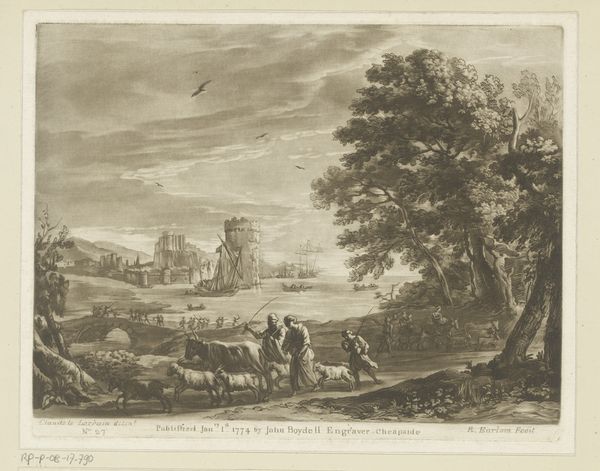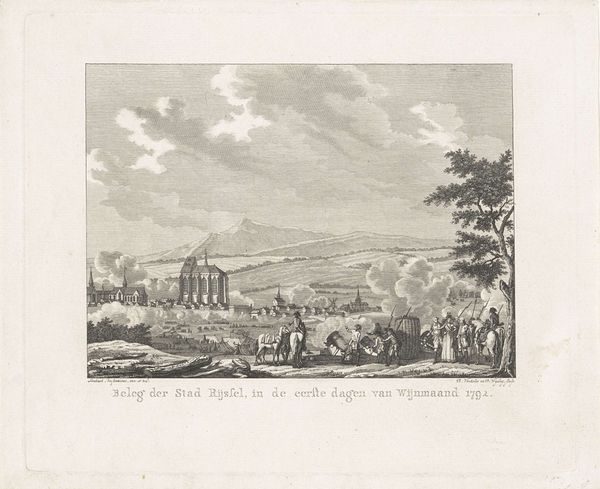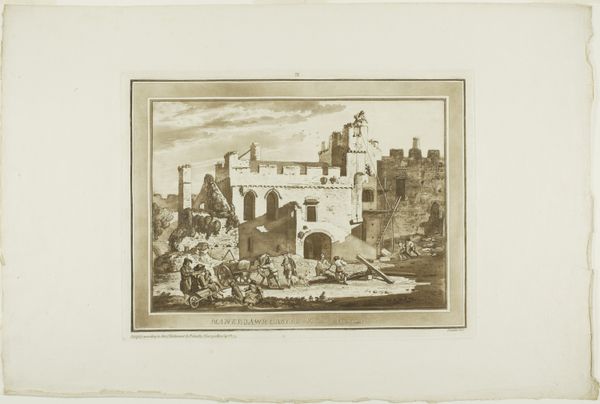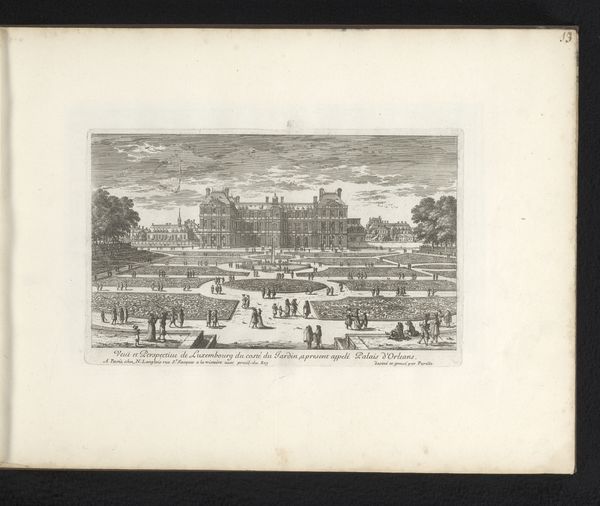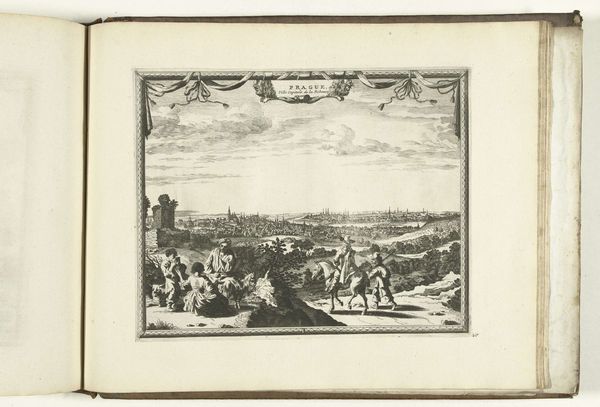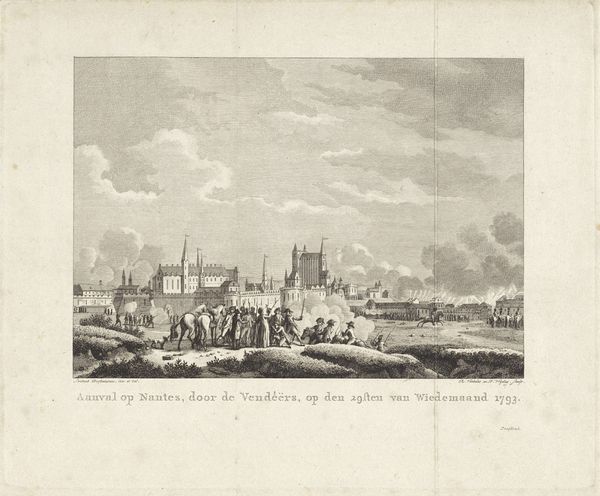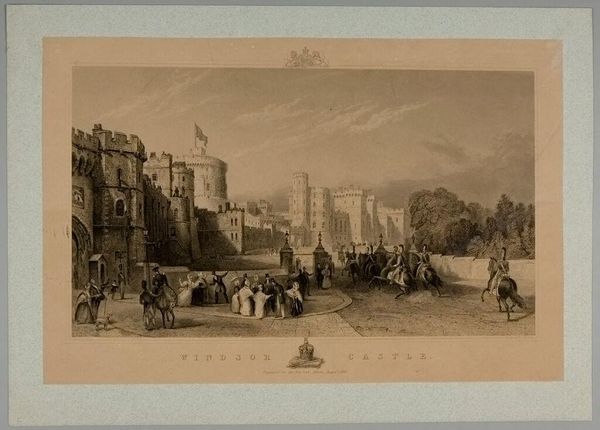
Episcopal Palace at St. Davids, from Twelve Views in Aquatinta from Drawings taken on the Spot in South Wales 1773 - 1775
0:00
0:00
aquatint, drawing, print, etching, paper
#
aquatint
#
drawing
#
neoclacissism
# print
#
etching
#
landscape
#
paper
Dimensions: 180 × 255 mm (image); 239 × 315 mm (plate); 357 × 525 mm (sheet)
Copyright: Public Domain
Curator: Here we have Paul Sandby’s "Episcopal Palace at St. Davids, from Twelve Views in Aquatinta from Drawings taken on the Spot in South Wales," dating from about 1773 to 1775. It’s a fascinating combination of etching and aquatint on paper. Editor: It has such a serene, almost melancholic feel to it. The muted tones really emphasize the ruined state of the palace. The lines of the architecture contrast with the somewhat rough quality of the landscape drawing style itself. Curator: Indeed. Sandby was meticulous in documenting the architectural details of the palace, paying particular attention to the way light and shadow played across the facade. Think about the production, this was likely done on-site, and in terms of materiality the ready availability of etching materials led to a growth in the art world's popularity. Editor: The formal composition is certainly striking, I love how the lines of the palace horizontally stretch, providing balance, with the trees providing almost framing vertical forms. Note how Sandby employs atmospheric perspective, dimming the horizon to indicate distance. It creates a depth of field within the shallow print. Curator: Consider also the social context. These types of landscape prints catered to a growing middle class interested in picturesque views and antiquarian subjects. The aquatint, specifically, allowed for a greater tonal range than etching alone. What's really remarkable is how printmaking facilitated this access, shaping taste and encouraging an appreciation for the British landscape as commodity. Editor: You are absolutely right. From a formal view, the deliberate roughness and slight blurriness produced through the process emphasizes a rustic charm, even idealizes it, hinting at the sublime. Curator: The fact that this piece comes from a series designed for wider consumption emphasizes the economics that drives how we perceive a ruined building. One begins to question whether we mourn genuine artistic achievements, or rather mass appeal disguised through nostalgic representation of past glories. Editor: What I appreciate the most is the dynamic balance Sandby created. The careful rendering makes this work timeless. Curator: Ultimately, studying the techniques employed as well as Sandby’s work overall provides insight into Georgian tastes and the expanding reach of art and architecture among all social spheres.
Comments
No comments
Be the first to comment and join the conversation on the ultimate creative platform.

